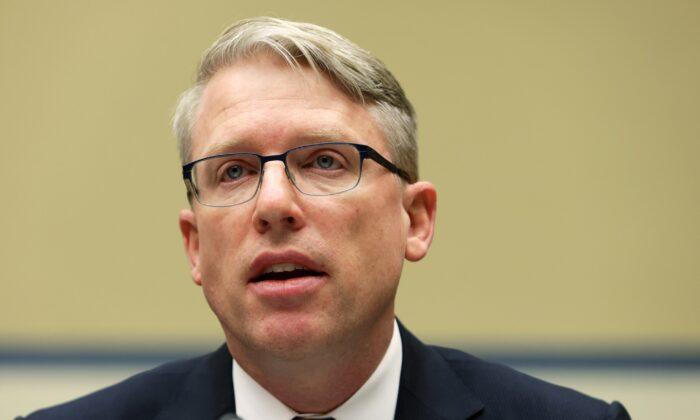U.S. military officials are planning out the possibility of fully withdrawing from Afghanistan by May of next year, a top official confirmed Tuesday, though Secretary of Defense Mark Esper has not yet issued orders for the total withdrawal.
U.S. officials are aiming at drawing down to 4,500 troops in the Central Asian country by late October or November.
“I’d like to make it clear that secretary has not issued orders to reduce military personnel below this 4,000 to 5,000 level in Afghanistan, although we are conducting prudent planning to withdraw to zero service members by May 2021 if conditions warrant, per the U.S.-Taliban agreement,” David Helvey said in Washington.
Helvey, the principal deputy assistant secretary of defense for Indo-Pacific security affairs, was speaking during a House Oversight and Reform Subcommittee on National Security hearing.
Taliban leaders must uphold guarantees made to the United States, including participation in intra-Afghan peace negotiations, Helvey said, for the United States to move forward with withdrawing troops.
“We’ll be watching very carefully to assess the conditions of Taliban compliance with the terms of its agreement, and that will be used to inform decisions on further and future withdrawals,” he added later.
That agreement also includes commitments to counterterrorism.

There is an expectation of a reduction in violence “and the violence that we are seeing today is too high,” Helvey said.
At least 57 members of Afghan security forces were killed in clashes this week between the forces and Taliban, Reuters reported, citing security officials.
The violence unfolded as teams representing both sides negotiated in Qatar.
The Taliban has “taken some positive steps,” Zalmay Khalilzad, special representative for Afghanistan reconciliation, told the House subcommittee.
“We look for more steps before we are satisfied, and I believe that once we reach 4,500, we’d do an evaluation of ties and actions that they have taken, and make decisions based on that,” he said, adding that the United States could change its force posture if they don’t deliver on their commitments.
Rep. Stephen Lynch (D-Mass.), chairman of the subcommittee, said President Donald Trump’s administration has continued to draw down troops despite the Taliban failing to deliver on some promises.
“Despite multiple indications that the Taliban have not fully met their commitments under the February agreement, the Trump administration has steadily withdrawn U.S. forces from Afghanistan, which has ceded much of our leverage to help shape the future of Afghanistan for its people and our national security interests,” he said.
“While we are all eager for our sons and daughters in uniform to return home, it is also important that we do not needlessly or recklessly bargain away the rights and freedoms that the Afghan people have gained at such a huge cost in American, coalition, and Afghan lives.”
Military officials have cast doubt on whether the Taliban can meet its commitments and sever ties with al Qaeda.
“The Taliban has still not shown conclusively that they’re going to break with al Qaeda,” U.S. Central Command commander Gen. Frank McKenzie told reporters on Sept. 9.

“As you know, they have been very consistent on not attacking us and the coalition. However, they have continued to go after the Afghan security forces at a pretty high tempo. And there’s some pretty stiff fighting going on as you know, as a result of that.”
He added later, “There are still some things out there that concern me about the Taliban’s either ability or willingness to comply with all the terms of the deal.”
Trump’s longtime goal has been complete withdrawal from what he describes as “endless wars.”
U.S. troops invaded Afghanistan in 2001 and have maintained a presence there to this day.
The drawdown earlier this year saw force levels cut from about 13,000 to 8,600.
“We’re there 19 years,” Trump told reporters in May in Washington. “I think that’s enough.”
McKenzie said 4,500 troops would still enable the military to accomplish “core tasks.”
“We’ve shown more than ample goodwill and our willingness to demonstrate that we don’t want to be an occupying force in this country. But we do have strategic interests, vital interests, that compel us to be certain that these entities, such as al-Qaida and ISIS, can’t be guests there to attack the United States,” he said.





